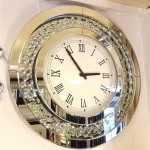How to Screen Mirror iPhone to MacBook Pro
Screen mirroring allows users to display the contents of their iPhone screen on a larger display, such as a MacBook Pro. This feature offers a convenient way to share presentations, watch videos, play mobile games, or demonstrate apps on a bigger screen. This article outlines several methods for screen mirroring an iPhone to a MacBook Pro.
Using AirPlay with a Compatible Mac
AirPlay is Apple's proprietary technology for wirelessly streaming audio, video, and screen content between devices. To use this method, both the iPhone and the MacBook Pro must be on the same Wi-Fi network and have AirPlay enabled.
1. Ensure both devices are connected to the same Wi-Fi network.
2. Open Control Center on the iPhone by swiping down from the top-right corner of the screen (or swiping up from the bottom on older models).
3. Tap the "Screen Mirroring" icon.
4. Select your MacBook Pro from the list of available devices.
5. The iPhone's screen will then be mirrored on the MacBook Pro's display.
6. To stop mirroring, open Control Center on the iPhone, tap "Screen Mirroring," and then select "Stop Mirroring.”
Utilizing QuickTime Player
QuickTime Player, pre-installed on macOS, offers a wired solution for mirroring an iPhone to a MacBook Pro. This method provides a more stable connection and is ideal for activities requiring minimal latency.
1. Connect the iPhone to the MacBook Pro using a Lightning to USB cable.
2. Open QuickTime Player on the MacBook Pro.
3. Go to "File" in the menu bar.
4. Select "New Movie Recording.”
5. Click the dropdown arrow next to the record button.
6. Choose the iPhone as the camera and microphone input source.
7. The iPhone’s screen will be displayed in the QuickTime Player window.
Third-Party Screen Mirroring Applications
Several third-party applications offer screen mirroring capabilities between iOS devices and Macs. While some are free, others may require a one-time purchase or a subscription. Researching and selecting a reputable app that meets specific needs is important.
1. Research reputable third-party screen mirroring applications on the App Store or through online reviews.
2. Download and install the chosen application on both the iPhone and MacBook Pro, following the developer's instructions.
3. Launch the applications on both devices and follow the on-screen prompts to establish a connection.
4. Once connected, the iPhone screen should be mirrored on the MacBook Pro.
Troubleshooting Connection Issues
Occasionally, users may encounter connection problems when attempting to screen mirror. The following steps can help resolve common issues.
1. Verify that both devices are on the same Wi-Fi network and that the network is functioning correctly.
2. Restart both the iPhone and the MacBook Pro.
3. Update to the latest versions of iOS and macOS to ensure compatibility and bug fixes.
4. If using AirPlay, check that AirPlay is enabled on both devices.
5. If using a wired connection, ensure the cable is not damaged and is properly connected.
6. If using third-party software, consult the application's documentation or support resources for troubleshooting guidance.
Optimizing Mirroring Performance
Several factors can affect the performance of screen mirroring. Optimizing these factors can create a smoother experience.
1. Close unnecessary applications on both devices to free up system resources.
2. Reduce the distance between the iPhone and the MacBook Pro, especially when using AirPlay.
3. Minimize interference from other Wi-Fi devices operating on the same network.
4. Adjust the screen resolution on the iPhone if performance issues persist. A lower resolution can improve mirroring speed.
Benefits of Screen Mirroring
Screen mirroring provides a range of advantages for various uses.
1. Larger Display: Enjoy mobile games, videos, and photos on a bigger screen for a more immersive experience.
2. Presentations and Demonstrations: Share presentations or demonstrate mobile applications to a larger audience with clarity.
3. Recording Mobile Activity: Use screen mirroring with recording software on the MacBook Pro to capture iPhone screen activity for tutorials or presentations.
4. Enhanced Collaboration: Facilitate collaborative work by sharing iPhone content with colleagues or clients in meetings.
Choosing the Right Mirroring Method
The appropriate mirroring method depends on individual needs and circumstances.
1. AirPlay offers wireless convenience, but performance can be affected by network conditions.
2. Wired connections through QuickTime provide greater stability and lower latency, making them suitable for activities requiring precise timing.
3. Third-party apps may offer additional features or compatibility with older systems, but they may require separate installation and configuration.

How To Mirror Iphone Display Macbook Ios 12 Macos Mojave

How To Screen Mirror Iphone Macbook 2024

2024 Updated How To Mirror Iphone Mac With 5 Methods

2024 Updated How To Mirror Iphone Mac With 5 Methods

How To Use Apple Airplay Mirror Your Iphone Mac Screen On Tv Roku And More Cnet

2024 Updated How To Mirror Iphone Mac With 5 Methods

3 Ways To Mirror Iphone Macbook Pro With Steps

Newest How To Mirror Iphone Mac Macbook Airdroid

How To Wirelessly Mirror Iphone Or Ipad Display A Mac Tutorial

How To Screen Mirror Ios 13 Iphone A Mac Or Windows Computer Wirelessly








